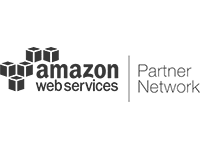All the World’s a Stage …. For social media hacking
As the bard said, “all the world’s a stage …” But under the bright lights of today’s social media platforms, men and women aren’t merely players—they have starring roles in a global town square. We can argue about what this means for our society, and whether your Facebook “friends” are really friends. But there’s no argument that social media usage by your employees can and does affect your business. The only question is how to handle it.
Stop the social media thief
Let’s start with how it can affect your business. There’s your business, and then there’s your employees’ personal business that they choose to share with their online “friends.” That’s their private business, right? Well, yes and no. It’s private as long as it’s done outside of business hours, on personal devices, and doesn’t discuss proprietary information. Otherwise, using social media accounts while they are on the clock can have implications that range in level of severity. On one end, it can be a time suck, stealing time from otherwise productive and engaged team members. On the other end of the spectrum, it can open up your systems to potential breaches. One small mistake on a social media site accessed on a work device can compromise your whole system.
Create your own culture
Scary stuff, right? And keep in mind, it’s not like your average employee has nefarious intent in all of this, although some could. Instead, it’s just the current culture. Just like people don’t think twice about bringing that cup of coffee to their desk in the morning, they probably don’t think twice about jumping on Facebook before that 9 a.m. meeting starts. However, your coffee doesn’t come with a side of potential hacking. That’s why it’s up to you to create your own culture so that everyone understands what to do. You really can’t do that until you actually understand employee behavior. Understanding the when, where, and what behind social media usage will help you implement policies that protect your data, your company, and your employees.
Establish your cybersecurity process
You might be thinking that this really sounds Big Brother-ish. Remember, it’s not about controlling your employees’ private lives. It’s about creating a culture that will protect your assets, whether it’s data, time, or resources. “Employee monitoring” isn’t a dirty word. It’s just one small part of establishing your cybersecurity practice. The easiest way to do this is to invest in software that helps you understand usage on your network and communicate with your employees. LanScope Cat, for example, allows you to decide what elements of employee behavior you’d like to monitor. That way, you are defining what’s relevant to you—which is important as you communicate to your workforce about this. It also allows you to set limits and policies that are delivered to your employees in real-time, helping create a culture where people know and understand how to engage online to protect the company.
With everyone on the same page, you’ll protect your private data and keep your employees directly engaged in upholding your best practices. And you’ll keep hackers and bad actors off your company’s stage.





